Arabis: description and varieties, planting and care
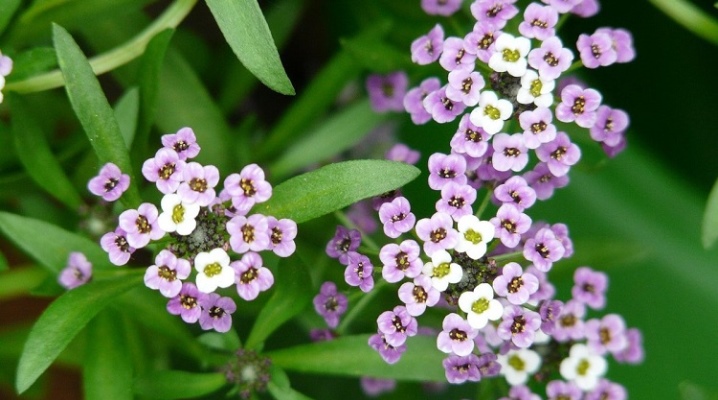
The landscape design of a summer cottage can be decorated in various ways, but in order to originally combine life and nature, it is necessary to place more flower beds and flower beds in the garden. Arabis (rezuha) will be a gorgeous decoration in any garden. Despite the fact that rezuha prefers to grow on mountain slopes, it can be successfully cultivated in suburban areas.
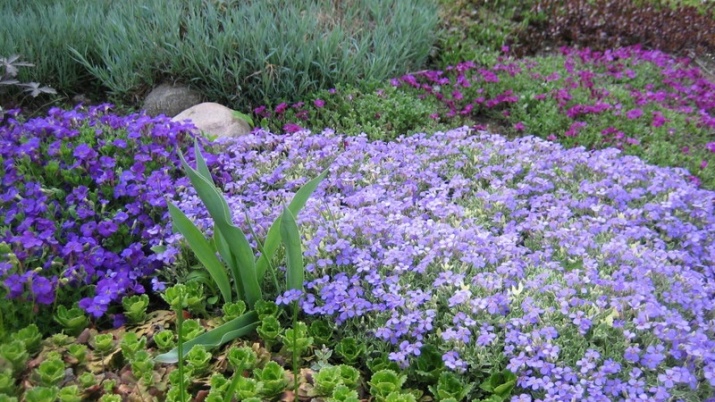

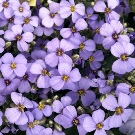

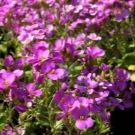
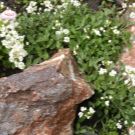
Peculiarities
Arabis is a perennial flower. This herbaceous plant has more than 100 species, each of which has its own description. In the wild, Arabis prefers to grow in temperate zones, since tropical Africa is considered its homeland. Due to its high decorative qualities, this plant is used to create contrasting compositions in flower beds, it looks good in mixborders and acts as an unusual decoration for borders. Arabis belongs to both perennial and annual plants. But in the latter case, when growing it, the rooting of the creeping stem should not be allowed. The height of this flower usually does not exceed 30 cm. The bright green foliage is moderately dense, the leaves are heart-shaped, they have a jagged pattern at the edges.
The flowers of this plant are light yellow, dark red, white or pale pink in color. Each variety of rezuha has its own characteristics of inflorescences, therefore, they are divided by type into simple or terry. The size of the buds in diameter is up to 1.5 cm, they are neatly collected in compacted inflorescences. Razuha begins to bloom violently in May, filling the area with a sweet aroma that attracts not only bees, but other insects as well. Fruits ripen in autumn in the form of pods filled with black seeds, in some varieties they are winged.
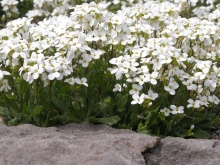
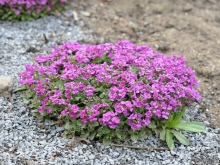
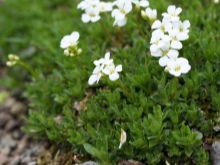
Types and varieties
Arabis is considered one of the most unusual plants that can be used to design original flower gardens in a modern style. To create a gorgeous composition of these flowers, you should know the rules for their planting and reproduction and take into account varietal characteristics. Most often, flower growers choose the following types of cuttings for planting.
- Alpine Arabis. This is an evergreen perennial crop (its height is 35 cm) with a generative type of stems - they are too branchy. Compared to other perennials, Arabis flaviflora does not completely die off (“fall asleep”) for the winter. The foliage of the plant is oval, drooping, on the stems it has an arrow-shaped shape. At the end of April, light buds appear on the mini-shrub, they are combined into tiny inflorescences that remain open for one month.

- Bruiform. The homeland of this plant is Bulgaria and Greece. A perennial shrub with a height of 10 cm has drooping foliage, it is oval and covered with fluff on top. The leaves are combined into small rosettes.
When arabis blooms, it becomes white, as it is covered with many delicate flowers.

- Caucasian. Some scientists attribute this perennial to a separate subspecies of alpine rezuha. The height of Arabis caucasica is not more than 30 cm, the leaves are miniature, oblong with denticles at the edges. The flowers of the rezuha are white, they are formed into tassels 1.5 cm long.Today, there are several subspecies of this arabis: exquisite terry flora-pleno, ciliated rosabella (pink) and chic variegata with yellow flowers at the edges.

- Runaway. Variegated perennial (height 12 cm and more), differs in small rosettes, on which faded inflorescences appear during flowering. Due to the special properties of the root system, the plant is easily fixed on the slopes. Arabis is easy to plant and has frost resistance. The flowers of the perennial have a delicate purple color, which gradually turns into a milky hue.
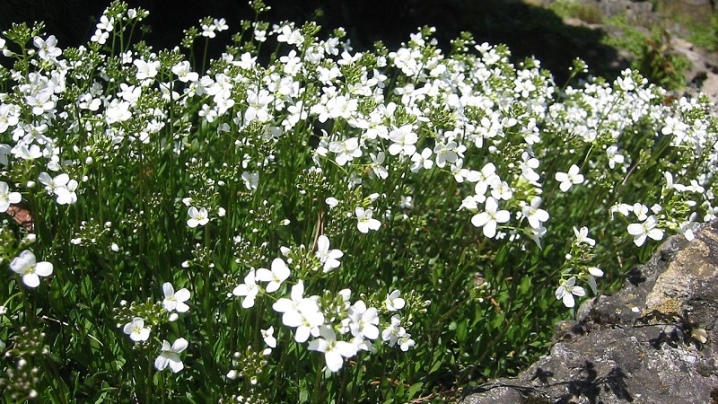
- Stunted. The homeland of this ornamental shrub is the Alps and the Apennines. This is a low-growing plant (height 15 cm). Blooms from May to June. Despite the inconspicuous flowers, Arabis is highly decorative and is widely used in landscape design.
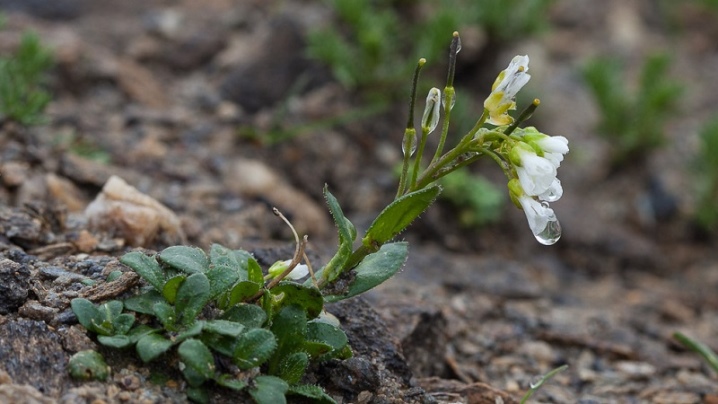
- Ciliated. It grows mainly on high rocky slopes, its leaves form compact rosettes and are distinguished by a gray-green color.
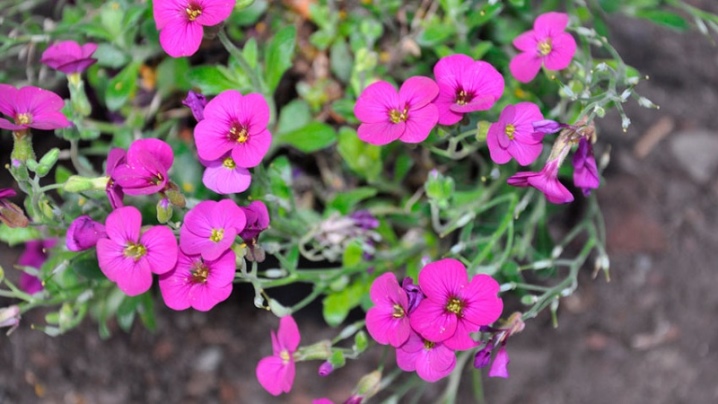
As for the common varieties of arabis, they include the following.
- "Ferdinand of Coburg". It is a semi-shrub 5 cm high. It is widely spread among gardeners due to its long flowering, during which it pleases with delicate pink, white and yellow flowers. When planting this variety in summer cottages, you need to take care of good drainage - it will provide the plant with high resistance to sudden temperature changes.

- Arends. A compact perennial that has a long and exuberant flowering. Its leaves are pale green, have a dark pink, milky or yellowish frame. The buds are white and look gorgeous against the background of dark green leafy rosettes.
When growing on your own, remember that this variety loves watering and prefers to grow in well-lit areas.

- Schneeshaube. One of the most famous varieties of rezuha among florists, which is characterized by huge flowers (their diameter can be up to 20 mm). They are collected in large inflorescences, the length of which reaches 15 cm.As for the height, the shrub usually grows up to 25 cm.
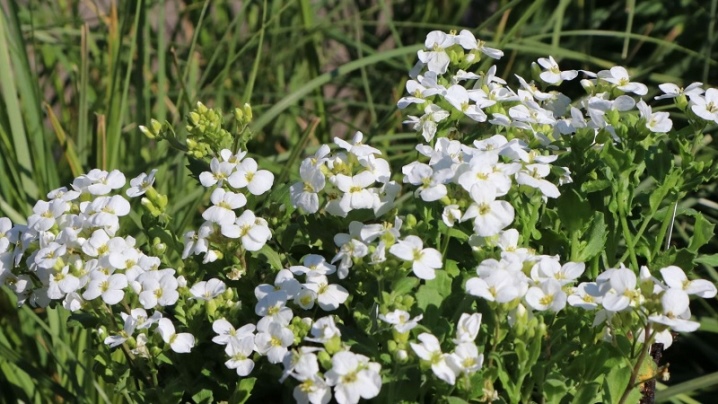
- "Zyunderman". It belongs to the dwarf varieties of arabis, since its height does not exceed 5 cm. The leaves of this perennial are leathery, dense with a slight sheen. In summer, it is covered with many small snow-white flowers that fill the garden with a delicate aroma. Likes to grow in fertile and lighted areas.

- "Grandiflora Superba". It is a light-loving evergreen plant up to 300 mm high, densely pubescent leaves of a gray-green hue. The flowers are small, snow-white or pink. Flowering is short and is observed only from June to July. Perennial is perfect for design in rock gardens and flower beds. It is hardy and can grow even in areas with poor and dry soil.
The plant propagates usually by seeds - they are sown both for the winter and in the spring.

- Old Gold. An evergreen perennial from 5 to 30 cm in height. Stems are thin, the leaves are collected in rigid rosettes, lanceolate and painted in bright green. This variety is appreciated by summer residents due to its effective flowering, during which the bush at the tops of the shoots is covered with white flowers. The flowering period is from May to June.
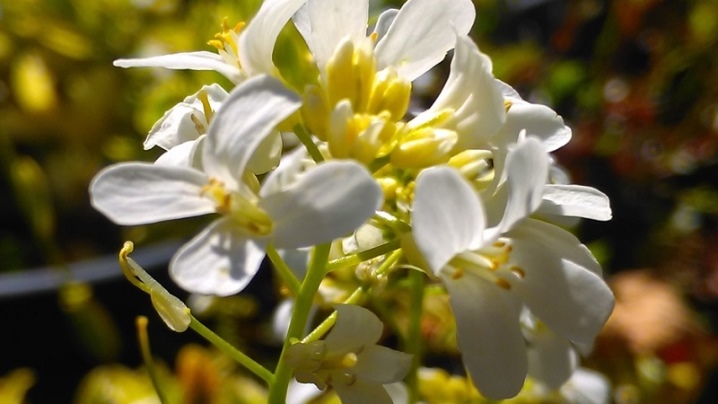
- "Pink". An incredibly beautiful flower 30 cm high. It is in great demand in landscape design, as it acquires a delicate pink hue during flowering. Suitable for decorating garden borders. Grows best in areas protected from the wind.
Each of the above varieties is characterized by its decorative qualities and growing rules. Therefore, before giving preference to one or another type of rash, you need to take this into account.

How to plant?
Planting arabis in open ground is simple, but it is important to comply with the deadlines. It is recommended to plant this flower in late May or early June. If the plant is planted from seedlings, then you need to wait until 3 real leaves appear on the seedlings. You need to select non-darkened places for planting, with ventilation. Razuha grows well in partial shade, but at the same time the quality of its flowering is lost and growth is reduced.
As for the soil, then it is advisable to choose areas in the garden with loose and sandy soil that is not too moist... Before planting, it is recommended to additionally apply complex fertilizers to the soil, as well as to process it and remove weeds. You can increase the air and moisture permeability of the soil by adding turf, medium-sized pebbles and river sand to it.
If you plan to plant a flower in a poor and acidic soil, then you can add slaked lime to it.
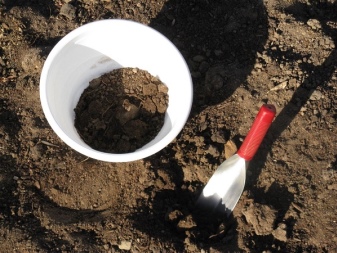

When planting Arabis on open soil, it is important to observe the planting scheme, which is 40 * 40 cm. As a rule, 3-4 seedlings are placed in one hole, after which it is immediately watered abundantly. Fertilizers can be applied both before and after planting. Arabis planted from seedlings will begin to bloom only next year, so many growers prefer to grow it from seed.
It is advisable to sow all varieties of razuha in early spring. For growing seedlings, seeds are sown in boxes in early October. The seeds are not planted too deeply in the soil, 5 mm. They germinate well at temperatures from +20 degrees. To speed up the germination process, it is recommended to cover the area where the seeds are sown with a special film.
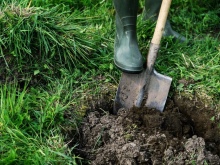


How to take care of it properly?
Like all ornamental crops, Arabis requires attention, although the process of growing it is generally quite simple. The most important thing is to water, top dressing, loosening the soil, and pruning on time. To protect against diseases, insects, the grass on the site must be removed. Arabis tolerates drought well and responds quickly to its abundance. Therefore, you need to try to maintain a normal humidity level. The grooming also provides for constant weeding, which must be carried out until the Arabis is strong.
Timely picking also plays a huge role, it is especially important for young seedlings, which are planned to be planted in a permanent place on the site. To do this, they are placed in separate cups and later planted in the garden, keeping a distance of 30 cm from each other. Such a procedure is optional only when the flower is not planned to be grown separately. In order for Arabis to please with its healthy appearance and contrasting color, it should be fed. It is especially important to apply fertilizers during the growing season and during flowering, when the plant requires a lot of nutrients.
For feeding, it is advisable to use mineral fertilizers intended for this type of plant.

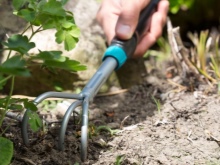
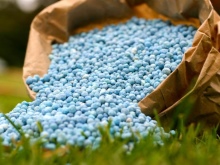
After the perennial has bloomed, you can collect its seeds, which will be useful for subsequent planting. To get high-quality seed, you need to choose the most beautiful, healthy bushes in the summer and mark them. Seeds are usually harvested before the onset of the first frost, in dry weather, since the harvested material at high humidity can give low shoots. As soon as the seeds are collected, all other inflorescences with part of the stem are cut off. Then you should start preparing the crusher for wintering, since it can withstand sub-zero temperatures only up to -7 degrees, and without a special coating it can die.
In December, all Arabis shoots are cut off, only pagons 2-4 cm long remain. They are covered with non-woven material, spruce branches or dry leaves. In addition, in severe cold weather it will not hurt to cover the plantings with snow.


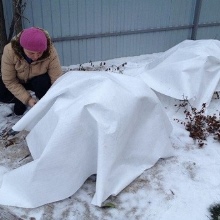
Reproduction methods
To date, gardeners have learned how to propagate Arabis not only by seeds, but also by dividing the bush, layering or cuttings... Seeds are sown both directly into open ground and preliminarily into containers for growing seedlings. This is the easiest way to breed Arabis.
As for grafting, then it is suitable exclusively for terry species and rare varieties... For him, a leaf with a heel is usually used, which later gives roots. It is very easy to obtain planting material. First you need to take a sheet; it is not cut off, but plucked with a guy, carefully separating part of the stem bark so that the subcortex pulp remains. You need to do it after flowering.
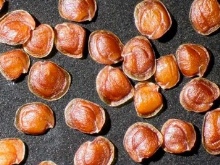
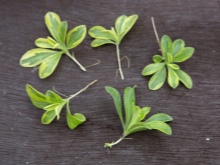
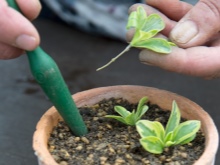
In addition, Arabis can be successfully propagated by cuttings obtained from the tops of the shoot... To do this, cut off a shoot with a length of no more than 10 cm, clean it from the lower leaves and plant it in a fluffy fertile substrate at a slight slope. Then everything is covered with a transparent cap and placed in a bright place where the rays of the sun do not penetrate. Periodically, the cutting should be opened and ventilated. After the leaves restore their turgor, you can safely proceed to the direct transplant.
To prepare the layering, it is necessary to carefully bend the shoot to the soil and cover it with a layer of earth in the place of the leaf node, and pinch the tops. As soon as roots appear on the nodules of leaves and grow into the ground, the layers can be separated and then transplanted to a permanent place. The method of dividing the bush is also widely used. It is simple to perform it: the bush is carefully dug out of the soil, divided into small parts and each is planted separately.
It is advisable to divide the bushes after they bloom. Typically, this breeding technique is used for bushes that are more than 4 years old.

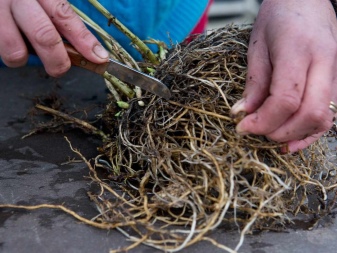
Diseases and pests
All varieties of Arabis are characterized by resistance to insects and rot, but sometimes the culture can suffer from such ailments as viral mosaic and cruciferous flea invasions... Arabis mosaic virus (rezuhi) is manifested by the appearance of small brownish spots on the foliage, which later increase in size and connect to each other. Unfortunately, this disease is incurable, therefore, damaged bushes must be immediately removed from the site and burned. The soil must be treated with a strong solution prepared from potassium permanganate, and not to grow flowers in this area for at least a year.
In dry and hot summers, a cruciferous flea can appear on Arabis, which many gardeners are trying to get rid of by laborious dusting of the bushes with wood ash. Experienced flower growers recommend protecting plants from this insect by periodically treating the site with drugs such as Iskra, Karbofos, Biotlin and Aktara.
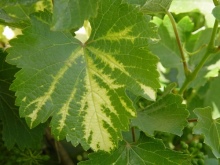
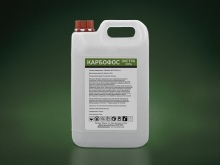

Use in landscape design
Arabis has gained immense popularity among summer residents, as it is an excellent decoration for any garden plot. To create original compositions from it, both a flower bed and huge flower beds are suitable. Perennial looks interesting near terraces and architectural structures made of stone. To get a beautiful composition, it is enough to plant yellow irises, scarlet tulips or alissum next to the arabis. Roses complement it well.
If there are rockeries and rock gardens in the summer cottage, then you can decorate their designs with arabis. The flower also looks gorgeous in the design of mixborders, rocky slopes. He gives them a bright accent. In addition, a perennial can be a decoration for any balcony.
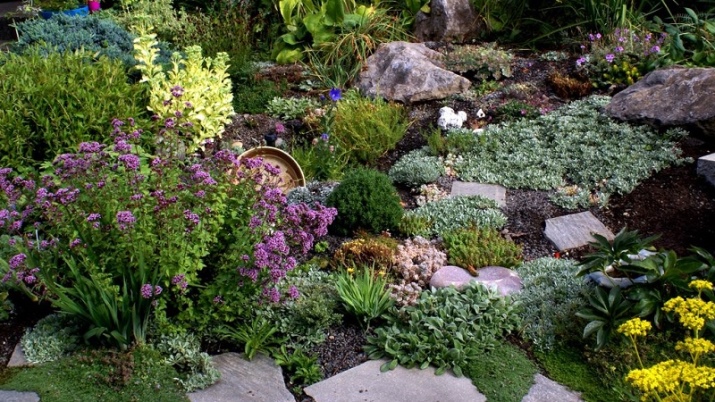
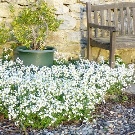
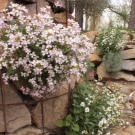
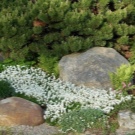
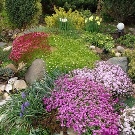
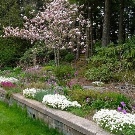
In the next video, you will find more information about Arabis.







































































































The comment was sent successfully.